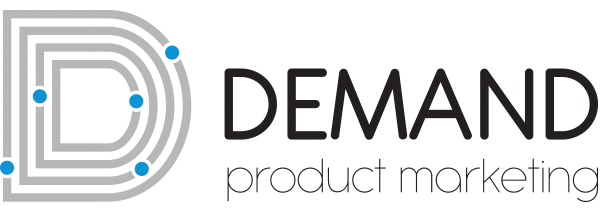In the crowded and often competitive Software as a Service (SaaS) landscape, building a product differentiation strategy is not just an exercise in marketing—it is a business-critical task. Software-focused companies thrive or fail based on their ability to stand out in the minds of potential customers as the best option to solve problems. Differentiation helps companies articulate their unique value, connect with their target audience, and establish a position in the marketplace that competitors cannot easily replicate.
At its core, product differentiation is about answering a fundamental question: Why should customers choose your product over others? While the question may seem straightforward, the answer often requires deep introspection, extensive research, and creative positioning. To succeed in this endeavor, you must combine a clear understanding of your product’s capabilities, a nuanced view of your target audience, and an awareness of market dynamics.
Understanding the Competitive Landscape
The first step in building a differentiation strategy is gaining a comprehensive understanding of the competitive landscape. This begins with identifying your direct competitors—those offering similar products or solutions—and your indirect competitors, who may not offer identical features but solve the same customer problems.
Beyond simply identifying competitors, you need to dissect their value propositions. Study their messaging, features, pricing models, and customer reviews. Pay attention to how they present themselves in the market and what resonates with their audience. However, differentiation is not merely about being different for the sake of it. Your strategy should highlight aspects of your product that provide genuine, meaningful value to customers.
This requires identifying gaps in the market—areas where competitors are failing to meet customer needs or where customer expectations are evolving. A SaaS company that can pinpoint these opportunities and align its product capabilities accordingly will be well-positioned to carve out a distinctive niche.
Defining Your Core Value Proposition
Once you understand the competitive environment, the next step is to define your core value proposition. This is the backbone of your differentiation strategy and represents the unique benefits your SaaS product delivers to customers. A compelling value proposition is not merely a feature list; it’s a story about how your product improves the lives of your customers.
Successfully differentiating often does so by focusing on one or more of the following areas:
- Customer Outcomes: Highlight how your product enables specific, measurable results for users. For instance, a project management tool might emphasize reduced time spent on administrative tasks, leading to increased productivity.
- Superior User Experience: A frictionless and enjoyable user experience can be a powerful differentiator. If your product is easier to use or more intuitive than competitors, it can become the preferred choice for users who value simplicity.
- Innovative Features: Introducing features or functionalities that competitors lack can provide a clear edge. However, these innovations must align with customer needs to truly resonate.
- Brand Alignment: For some customers, a company’s ethos, vision, or cultural alignment can be as important as product features. A SaaS company that positions itself as environmentally conscious or deeply customer-centric might differentiate through brand identity.
In crafting your value proposition, clarity and specificity are paramount. Avoid vague statements like “We are the best” or “We’re faster and cheaper.” Instead, focus on quantifiable claims and storytelling that connects emotionally with your target audience.
Segmenting Your Audience
Successful differentiation also requires a clear understanding of your audience. Different user segments will prioritize different features, benefits, or aspects of your product. By segmenting your audience and tailoring your messaging to address their specific needs, you can build a strategy that resonates more deeply.
For example, consider a SaaS company that offers an analytics platform. Small businesses might value ease of use and affordability, while enterprise clients may prioritize advanced features and scalability. Attempting to cater to both groups with a one-size-fits-all approach risks diluting your messaging and failing to connect with either segment effectively. Instead, a differentiated strategy might involve creating separate campaigns, landing pages, and content tailored to the unique concerns of each audience.
Understanding customer pain points is essential in this process. The more deeply you understand the challenges and aspirations of each segment, the more effectively you can position your product as the ideal solution. This requires gathering and analyzing data from sources such as customer interviews, surveys, and usage analytics.
Leveraging Your Product’s Unique DNA
Every product has a unique DNA—a combination of its history, technology, and vision. This DNA should serve as the foundation for your differentiation strategy. For example, if your product was developed with a specific user challenge in mind, that origin story can become a powerful narrative to differentiate your brand.
Your product’s architecture and design may also provide differentiation opportunities. Perhaps your platform is built on a proprietary algorithm or offers integrations that no competitor can match. By emphasizing these aspects, you can create a perception of exclusivity and innovation.
Balancing Features with Benefits
Software companies often fall into the trap of competing purely on features. While offering a robust feature set is important, differentiation based solely on features can be fleeting. Competitors can replicate features, often faster than you anticipate. Instead, focus on benefits—the tangible outcomes users achieve by using your product.
For example, rather than promoting your software’s ability to generate reports in three formats, emphasize how those reports empower users to make smarter business decisions faster. This subtle shift in focus helps customers connect with the product’s real-world value, rather than its technical specifications.
Pricing as a Differentiator
Pricing is another avenue for differentiation, but it requires careful consideration. Competing on price alone is risky, as it can erode profitability and create a race to the bottom. Instead, think of pricing as part of a broader value equation.
For example, a company offering premium enterprise software might differentiate through a value-based pricing model, where the price aligns with the measurable outcomes delivered to the customer. Alternatively, a startup targeting small businesses might emphasize affordability and transparency, appealing to budget-conscious users.
Your pricing strategy should align with your brand positioning and target audience. Regardless of the approach, ensure your pricing communicates value rather than cost.
The Role of Brand and Storytelling
In a market flooded with similar SaaS solutions, your brand can become the ultimate differentiator. A strong brand conveys trust, expertise, and personality, helping you connect with your audience on an emotional level.
Storytelling is an essential tool for building your brand. Share stories about how your product has transformed customers’ lives, the inspiration behind its creation, or the vision driving your company. Authenticity is key—customers can sense when a story is forced or insincere.
Visual identity also plays a role in differentiation. A well-designed logo, website, and marketing materials can create a memorable impression, reinforcing the idea that your product is unique and worth exploring.
Adapting to Market Dynamics
Differentiation is not a one-time activity. As the SaaS market evolves, customer expectations and competitive dynamics change. Staying ahead requires a commitment to continuous innovation and adaptation.
Regularly monitor market trends, customer feedback, and competitor activities to identify opportunities for refinement. This might involve introducing new features, pivoting your messaging, or even targeting a different audience segment.
At the same time, resist the temptation to chase every trend. Successful differentiation requires focus and consistency. By staying true to your product’s core value proposition and unique DNA, you can maintain a strong and distinct position in the market.
Measuring Success
Finally, a differentiated strategy is only as good as its outcomes. Establish metrics to measure the success of your efforts, such as customer acquisition rates, retention metrics, or Net Promoter Score (NPS).
Gather qualitative feedback from customers to understand what aspects of your product and messaging resonate most. Use this feedback to refine your strategy and ensure that your differentiation efforts continue to align with customer needs.
Building a product differentiation strategy for a SaaS product is both an art and a science. It requires a deep understanding of your market, a clear articulation of your unique value, and a commitment to delivering genuine benefits to customers.
While the journey is challenging, the rewards are significant. A well-differentiated SaaS product not only attracts and retains customers but also builds a brand that inspires loyalty and trust. By focusing on the aspects that make your product truly unique and meaningful, you can position your SaaS offering as the go-to solution in a competitive market.

